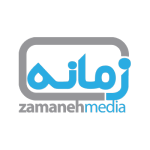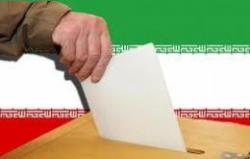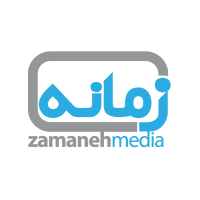
Iranian sociologist Farzin Vahdat discusses the chief players in Iranian politics and provides a general outlook on how the current political streams could flow in the upcoming presidential election of June 14.
• What are the fundamental issues at stake in the upcoming election?
Farzin Vahdat: The economic problems associated with inflation with no increase in income levels, the international embargo on Iran and its consequences such as the drastic decline in the value of the national currency, unemployment, the nuclear issue and the possibility of foreign military action are looming very large at this very sensitive juncture in Iranian history. Iranians are also preoccupied by a “moral crisis” that has created a deep sense of malaise among different strata. As Asghar Farhadi’s Oscar-winning film “A Separation” accurately depicts, there is very little social trust in Iran these days: individuals are after personal gain at any cost. Other problems, such as the environmental crisis and the state’s fastidious restrictions on the private sphere, are also suffocating many, both literally and figuratively.
Another thing at stake is the possible directions the Iranian political system could take, either toward more openness or else a more totalitarian and authoritarian framework. Post-revolutionary Iran has seen the emergence of relatively large segments of the populace that are educated, professional, cosmopolitan and relatively well-off. These strata, which often are called the “middle class” (which I believe is a misnomer), have developed a rather strong sense of human and civil rights, particularly the youth and women. The Green Movement of recent years bears clear witness to the potentialities of these segments of Iranian society. The very existence of such strata in Iran could possibly affect change in the sociopolitical system and, in fact, eventually lead to democratization. Yet those in power are quite nervous about such a possibility and see it as a direct threat to their political power and economic interests.
• Can you identify the chief groups at power play in Iran's politcal system?
FV: The Revolution of 1979 was the result of diverse groups, Islamists and leftists, coalescing to overthrow the old regime. After the Revolution, the Islamist elements in the coalition eliminated other groups to consolidate their own power. However, from the beginning there were different factions and tendencies among the Islamist forces. This is partly because of the heterogeneous nature of the clerical establishment in Shi’ism, as well as politics in general. During the first decade after the Revolution, the main rivalry within the system was between the Islamic “leftists” (among them then-Prime Minister Mir-Hossein Mousavi) and the right-wing Islamists who pushed for a market economy, while advocating hardline social and cultural control. After the death of Ayatollah Khomeini in 1989, a new tendency became associated with Akbar Hashemi Rafsanjani’s ascendance to power, which can be described as “pragmatism”. Rafsanjani’s two terms as the President of the Republic (1989-1997) were marked by the political marginalization of the Islamic “leftists” and a coalition between the right-wing conservatives and the middle-of-the road pragmatism of Rafsanjani. The majority of leftists gradually developed a reformist outlook that was to become active in the election of Mohammad Khatami and the attempts at reform during his presidency.
Currently, there seems to be three major factions within the Islamic Republic. Primarily there is the conservative meta-faction supported by Ayatollah Ali Khamenei, who is designated as the Supreme Leader of the Republic. This faction is sometimes referred to as the “Principle-ists” of which a powerful branch is called the “Resistance Front”, headed by a staunch hardline cleric, Ayatollah Mohammad-Taghi Mesbah Yazdi. Then there is the “Populist” faction, headed by Mahmoud Ahmadinejad, who is trying to get his close friend and top aide, Esfandyar Rahim-Masha’i, elected as the next president of the Islamic state. This faction was supported by Ayatollah Khamenei and the Conservatives in the controversial election of 2009, but they soon disowned that faction and dubbed it the “Deviant Current.” The Populists have tried to appeal to the “downtrodden” through economic handouts, and tried to co-opt a segment of the “middle class” by evoking Iranian nationalist sentiments. The third faction consists of Reformists of the Khatami-type and Rafsanjani Pragmatists, who are trying to get the “middle class” to vote for them. The most prominent candidate of this group is Hashemi Rafsanjani, who came under severe attack by both the Conservatives and the Populists and was disqualified from running in the election by the Guardian Council.
The Conservatives control the very powerful militia, Iran’s Revolutionary Guards Corp (Sepah-e Pasdaran) and the para-military Basij. The Judiciary and the Legislative branches are also largely controlled by the Conservative faction. The Populists around Ahmadinejad and Masha’i are already a spent force. The mismanagement of the economy and the effects of western sanctions are hurting the livelihoods of the lower classes, who were supposed to be the beneficiaries of Ahmadinejad’s government. The “middle class” seems to be bewildered and demoralized by the suppression of the Green Movement. This group might have voted for a candidate such as Hashemi Rafsanjani for lack of an alternative, had he not been disqualified.
• To what extent is there bipolarity between the Conservatives and the Reformists?
FV: The social background of the majority of Conservatives, Populists, Pragmatists and Reformist can be traced to the traditional and religious classes that became politically active before and after the Revolution of 1979.
Yet the differences between the factions are real and serious. We should not forget that the Iranian Revolution of 1979 was primarily a cultural and ideological upheaval. The Iranian revolutionaries were very much under the spell of different ideological trends that have continued to this day. For example, many of the current Reformists began their revolutionary careers under the influence of Ali Shari’ati, who was a leftist-progressive Islamic thinker/ideologue. As these ex-radicals evolved, gaining experience in the hard years of the post-revolutionary period and war with Iraq, they gradually morphed into what we call the Reformist camp. The Conservatives on the other hand, have upheld most of their militant tenets, while some of them have morphed into the Populists.
• What is the determining factor in the next phase of the political process in Iran: conflict inside the regime or the conflict between the Iranian people and the system?
FV: In my view, the Leader and the Conservatives are adamant to hold on to power and oppose opening the political arena.  However, a large segment of Iranian society now wants to participate in the social and political processes of the country. This “middle class” possesses a relatively high degree of political maturity, as was manifested in the last presidential election in 2009 and the consequent events. The participants in the Green Movement, who largely belong to this class, very seriously asserted their right to fair and transparent elections and protested when the regime denied them that right, but for the most part they refrained from acts of violence. It is not clear, however, how long this segment of Iranian society would tolerate the frustration of its democratic aspirations. It is equally unclear what recourse this class has in the face of the continued suppression of its demands.
However, a large segment of Iranian society now wants to participate in the social and political processes of the country. This “middle class” possesses a relatively high degree of political maturity, as was manifested in the last presidential election in 2009 and the consequent events. The participants in the Green Movement, who largely belong to this class, very seriously asserted their right to fair and transparent elections and protested when the regime denied them that right, but for the most part they refrained from acts of violence. It is not clear, however, how long this segment of Iranian society would tolerate the frustration of its democratic aspirations. It is equally unclear what recourse this class has in the face of the continued suppression of its demands.
• Are Iran’s current problems mainly economic or political?
FV: These categories are inseparable. The Conservatives in Iran seek monopolies, both in the economy and politics. Their vision for these spheres is a state-directed form of monopoly capitalism, notwithstanding its contradictions, and a polity that is tightly controlled from above. Given that a capitalist system thrives on the initiative of entrepreneurship, the restrictions that the regime imposes on economic activity only lead to stagnation, even regression, of the economy. The poor results in the economic sphere lead to more social discontent, which in turn necessitates more political repression; and more political control and repression entails further negative consequences for the economic sphere. Thus a vicious circle of poor economic performance and increasing political repression is created.
• Do you think that the governing system has yet the capacity for solving or reducing Iranian society’s main problems?
FV: The primary concern of the Islamic regime is system maintenance. The Conservatives wish to preserve their political and economic power at any cost. Their strategy for system maintenance is monopolization of the economic system and a totalitarian approach in the political system. The regime attempts to “solve” the problems of Iranian society by repression, monopolization, and economic handouts to the poor. Given the existence of a resilient “middle class” and the shrinking of oil revenues due to the sanctions, it has to resort to more repression to maintain itself but at the same time undermines itself even more.
• How strong is the power of the Regime’s propaganda apparatus today?
FV: The regime has invested heavily in the propaganda apparatus from the very beginning of its existence. We should not forget that the clergy’s most effective social and political tool is “persuasion.” The Conservatives and the Populists have had a monopoly over radio and television. Even during Khatami’s Reformist presidency, the media mostly reflected the views of the Conservative establishment. During Ahmadinejad’s presidency, many publications have been permanently shut down. Currently there are only a few newspapers and magazines that are reform-oriented and they are quite cautious about what they publish as they grapple with self-censorship.
Meanwhile, the Establishment media have lost their credibility. The infighting between different factions, the blatant lies, and the inability to deliver on promises evoked by the propaganda have made the media lose all public trust. The media have also failed in fulfilling their entertainment function given the “spirit of seriousness” that generally has characterized the regime’s cultural policies.
Nevertheless, it would be wrong to assume that the propaganda machinery in Iran is totally ineffective. Especially for those who do not have access to the Internet and foreign-based media, the Establishment provides the only channels of information.
• What kind of President is Iran’s Supreme Leader looking for?
FV: The Supreme Leader’s recent statements clearly indicate Ayatollah Khamenei’s desire is to have the second political position in Iran become a mere “executive” who would implement the leader’s plans and vision.
• Will a new version of the turbulence of 2009 be possible in the upcoming election?
FV: This is exactly what the regime is trying to avoid at any cost, even at the price of further erosion of its legitimacy. The disqualification of Hashemi Rafsanjani is probably very much related to this issue. The regime has no appetite to see any more reforms so it would not tolerate the presidency of Rafsanjani. I think the primary reason that the Establishment in Iran did not allow Rafsanjani to campaign was precisely to prevent a repeat of the upheavals of 2009.
• Is such a repeat of the upheavals likely?
FV: The Green Movement did not simply melt into the air after its suppression. Rather it went into dormancy, like fire under ashes. If there is any opening, it might erupt again. On the other hand, given Iran’s extremely precarious position internally and externally, and given the political and intellectual maturity of this “middle class,” it is quite possible that this social body would act cautiously, and for good reasons.
• Which one of the candidates do you believe will have a greater chance to win the election?
FV: Among the approved candidates, Mr. Saeed Jalili, the current chief nuclear negotiator, seems to be favored by the establishment. He is inexperienced and young and, as such, most likely to toe the line set by Ayatollah Khamenei. Furthermore, he does not seem to have a power base, which would make him less likely to fancy himself independent of the Leader’s orders, as Ahmadinejad did.
• What impact will that have on Iran's international relations?
FV: The further closing of the polity and economy in Iran toward a more totalitarian system does not bode very well for the international arena. If this trend continues, probably the nuclear impasse would become even more complicated and entrenched, something that Israel and its western allies are not willing to accept.

Farzin Vahdat is a sociologist interested in notions and conditions of modernity and their applications to Iran, Islam andthe Middle East. He is the author of God and Juggernaut: Iran's Intellectual Encounter with Modernity (Syracuse University Press, 2002). He is also the author of the forthcoming book Islamic Ethos and the Specter of Modernity and of numerous articles in English and Persian, a number of which have been translated into various languages, including Swedish, Italian, and Spanish. He has taught at Tufts, Harvard and Yale Universities and Vassar College and is currently conducting research at Vassar.








